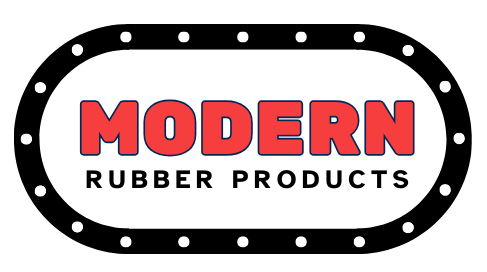
Why Reshoring Rubber Molding to the U.S. Makes Sense: The Benefits of Domestic Manufacturing
Share
Link to Original Story: Tariffs and the Future of American Manufacturing - AllAmerican.org
Introduction
Recent policy changes regarding tariffs on imported goods are reshaping the landscape of American manufacturing. According to a new report from AllAmerican.org, increased tariffs on foreign-manufactured components, including rubber molded products, are creating a significant shift in supply chain strategies across multiple industries.
This development is particularly important for companies that rely on rubber components, as the cost-benefit analysis of offshore versus domestic manufacturing has dramatically changed. Manufacturing personnel at American facilities now face critical decisions about sourcing rubber molded products that could impact their bottom line for years to come.
In this post, we'll explain the recent tariff changes, how they affect companies using rubber components, and provide four compelling reasons why reshoring your rubber molding to U.S. manufacturers makes more sense than ever.
What Happened
The recent policy changes outlined in the AllAmerican.org report represent a significant escalation in tariffs applied to imported manufactured goods, particularly those from certain Asian markets. These new tariffs, ranging from 25% to 35% on various categories of industrial components including rubber molded products, are designed to incentivize domestic manufacturing and reduce America's dependency on foreign supply chains.
This shift comes after years of global supply chain disruptions that exposed vulnerabilities in just-in-time manufacturing models reliant on overseas production. The rubber industry has been particularly affected, as nearly 60% of rubber molded products used in American manufacturing were previously sourced from overseas facilities.
These tariffs are not simply temporary measures but appear to represent a long-term shift in American industrial policy that crosses political lines. Both major parties have signaled continued support for policies that strengthen domestic manufacturing capabilities, suggesting these changes will remain stable through future administrations.
What's Happening Now
American manufacturers are responding quickly to these new economic realities. According to the report, there's been a 37% increase in inquiries to domestic rubber molding facilities in just the last quarter. Companies across automotive, medical, aerospace, and consumer goods sectors are actively exploring reshoring options for their rubber component needs.
Domestic rubber molding companies are scaling up operations to meet this increased demand, with many investing in new equipment and expanding production capacity. This expansion is creating new manufacturing jobs and stimulating local economies in traditional manufacturing regions.
Meanwhile, overseas manufacturers are attempting to absorb some of the tariff costs to retain American clients, but the economics increasingly favor domestic production, especially when factoring in shipping costs and lead times.
What This Means For You
If you're responsible for manufacturing operations or supply chain management at an American facility, these developments have direct implications for your rubber component sourcing strategy. With tariffs significantly increasing the cost of imported rubber molded products, the total cost of ownership calculation has shifted dramatically in favor of domestic sourcing.
Beyond the direct cost implications, your operations face increased risk with overseas suppliers, including:
- Extended lead times affecting production schedules
- Quality control challenges requiring additional inspection resources
- Intellectual property concerns with proprietary designs
- Diminished ability to make rapid design modifications
- Communication barriers slowing problem resolution
Each of these factors adds hidden costs to your operations that may not be immediately apparent in a simple price comparison but can significantly impact your overall efficiency and profitability.
What You Should Do Now
1. Conduct a Total Cost of Ownership Analysis
Rather than focusing solely on per-unit pricing, perform a comprehensive analysis that includes tariffs, shipping, inventory carrying costs, quality control expenses, and the cost of supply disruptions. Most manufacturers are discovering that when all factors are considered, domestic rubber molding is now cost-competitive or advantageous.
2. Explore Domestic Partnership Opportunities
Reach out to established U.S. rubber molding companies (like Modern Rubber Products) to discuss your specific component needs. Many domestic manufacturers offer consultation services to help evaluate the feasibility and cost-effectiveness of transferring your production back to American facilities.
3. Consider Design Optimization
Work with domestic rubber molding experts to review your current product designs. Often, slight modifications can optimize products for U.S. manufacturing methods, improving both quality and cost-effectiveness. Domestic manufacturers typically offer more collaborative design support than overseas suppliers.
4. Develop a Phased Transition Plan
Rather than making an abrupt switch, consider a strategic approach that gradually transitions your most critical or high-volume components to domestic production first. This allows you to manage the change effectively while immediately benefiting from shorter lead times and improved quality control.
Closing
The shifting tariff landscape has fundamentally altered the economics of rubber molded products manufacturing. For American facilities, what once seemed like a cost-saving measure—offshoring rubber component production—has now become a potential liability. By thoughtfully evaluating your options and partnering with experienced domestic manufacturers, you can turn these market changes into a competitive advantage.
As this situation continues to evolve, we'll provide updates on tariff policies and their impacts on the rubber molding industry. The trend toward reshoring appears strong and sustainable, suggesting that companies making the transition now will be better positioned for future success.
Stay Informed
Want to keep up with the latest developments in rubber manufacturing and reshoring trends? Subscribe to our blog for regular updates, industry insights, and expert guidance on optimizing your rubber component sourcing.
Need help evaluating your rubber molded products strategy in light of these new tariffs? Modern Rubber Products offers free consultation services to help you determine the most cost-effective approach for your specific components. Our team of engineers can analyze your current products and provide detailed comparisons of overseas versus domestic manufacturing costs.
info@modernrubberproducts.com
